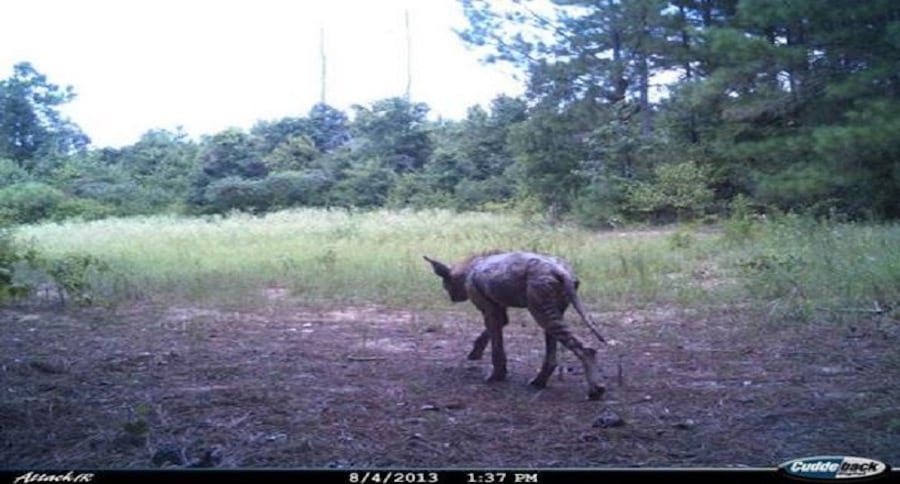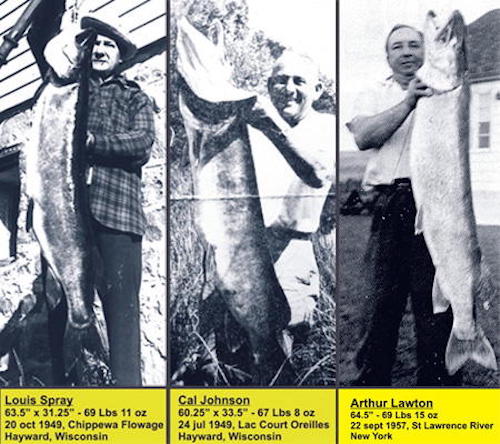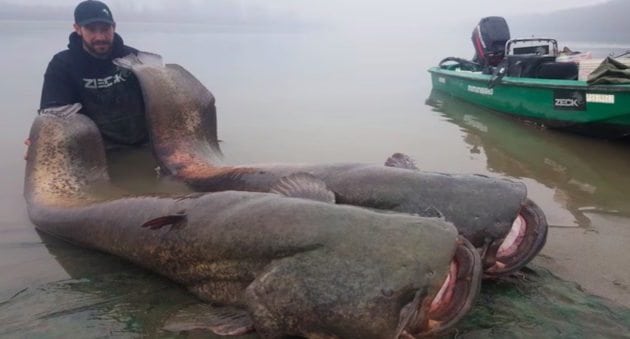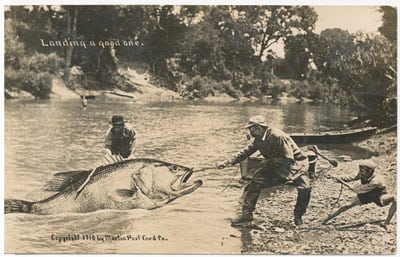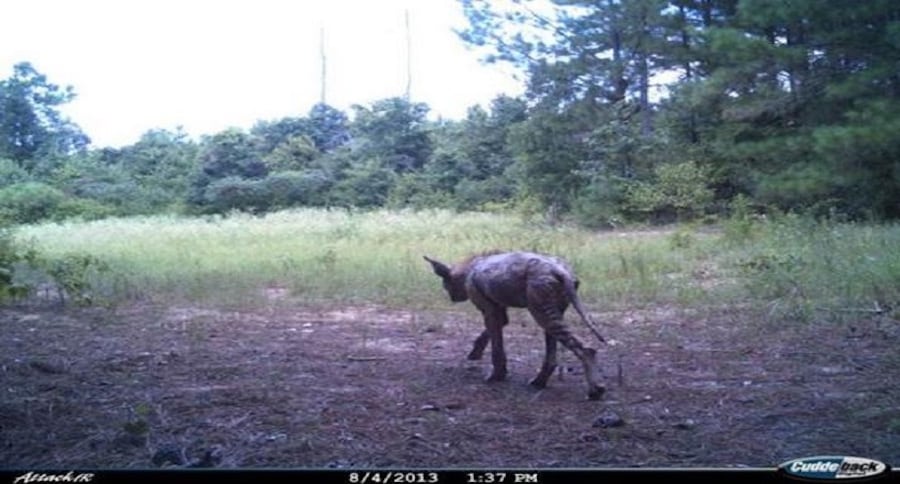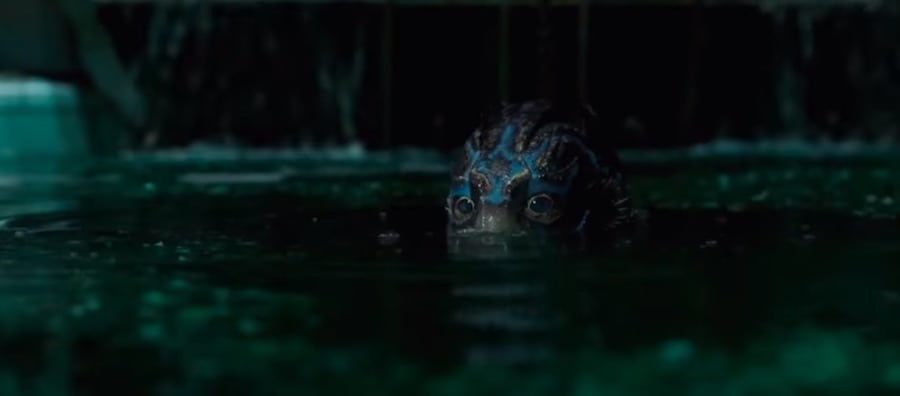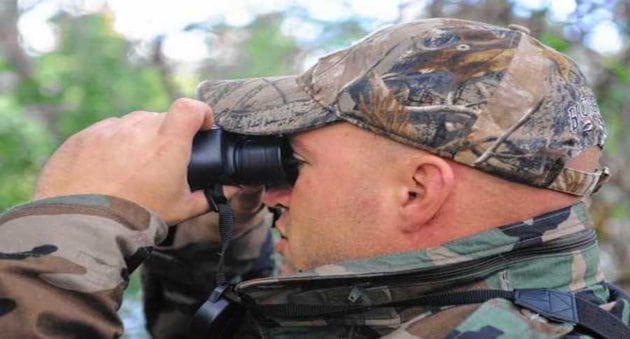When it comes to hunting and fishing mysteries, these top the cake.
If you've ever been fortunate enough to visit Yosemite National Park—one of the most famous parks in North America—then you've been a part of one of the greatest wilderness areas in the western hemisphere. Some of the greatest mysteries in the world started there, such as the famous Bridal Veil Falls, and the formation of the incredible El Capitan monolith.
Not to mention that more people have disappeared there than anywhere else.
As with many types of outdoor-mystery, the answers have come to people after long and careful study, but some mysteries of the outdoors seem to leave no trace, or at least so little that the questions remain. It is the same in some corners of the hunting and fishing world.
Explored herein are but a few of the odd and head-scratching realities that seem to have a cosmic gateway for their escape. The beautiful locales that we use to hunt, fish, and appreciate the joys of being outdoors don't always lend themselves to the simple beauty that we had hoped for when we set out. Sometimes they simply leave more questions than answers.
1. Who caught the world record muskellunge?
True tales of fishing rarely come without some kind of argument as to who caught the biggest fish, even among friends. When it comes to a record of this magnitude you'll get more than an argument, it could get downright nasty.
Three individuals immediately come to mind: Louis Spray, currently holder of the muskie record, Cal Johnson, and one Mr. Arthur Lawton, whose name has been dragged through the mud more than once about this.
In 2006, former Hall Fish Historian and World Record Advisor to the National Freshwater Fishing Hall of Fame icon Larry Ramsell penned a passionate plea to the Hall to review its decision to disqualify Arthur Lawton's world record muskellunge, replacing it with the Spray fish. He punctuated his message by writing, "It is my belief that information provided herein brings to light numerous unanswered questions that place doubt on the decision to disqualify the Arthur Lawton's world record muskellunge."
Authored by past Hall Executive Board President John Dettloff—at the time, independent of the HOF—in 1992, the review stated that the photograph of the fish was not of that which was caught and claimed to be the record, and that a key eyewitness to the weighing and measuring of the fish had recanted his story. Not so, says Ramsell.
For instance, Bob Denny was quoted as saying, "All I can say is if that picture was in error, Art gave them the wrong picture. I certainly saw the fish." Secondly, weighing witness Walter J. Dunn was misrepresented when he said that "I did not actually weigh or measure the muskie," but said that, "I was present when it was weighed in."
Was there a potential for a conflict of interest by Dettlof? As Ramsell wrote, "the new World Record, Spray's 69 lb, 11 oz muskie, was likely caught within sight of Dettloff's (Chippewa Flowage) resort" Sadly, Brad Latvaitis, Hall World Board of Advisory Governors, researcher, and Hall advisor on fisheries matters, along with Ramsell, resigned over the way that the issue was handled, both after more than 30 years of service to the Hall.
Ramsell was quick to say, "I respect anyones right to disagree with me on anything regarding our muskie history but please allow me the advantage of my voluminous files, gathered over the past 45 years."
The reading of Ramsell's well conceived, thought out, and put together piece should be mandatory for muskellunge fishermen everywhere.
2. Was the Rompola buck legitimate?

Rompola Buck
The Holy Grail of deer hunting mysteries, the Rompola buck is the subject of controversy and wide-ranging speculation to this day. In November, 2017 and again in February of 2018, Wide Open Spaces writers Colton Bailey and Travis Smola penned their thoughts on the mystery of what may have shattered the world record rack for a whitetail deer, and some of their conclusions were much the same.
Mitch Rompola, the Michigan deer hunter who laid claim to the kill was as good a deer hunter—specifically a bowhunter—as they come. One big emphasis on the legitimacy of the deer was the discoloration of the antlers, and the 'droopy' ears. Maybe worst of all, Rompola almost completely disappeared without a fight.
The similarities end there. While Colton tends to side on the hoax side of the argument, Travis has defended Rompola with a sound argument, saying that there were eyewitnesses that examined the buck who didn't mind saying that it was completely legitimate such as Bill Bailey, an 18-year veteran conservation officer at the time saying,
"I saw the deer, I saw it closely. I handled the deer" He added that there were "no questionable open doors with it." And there were many more eyes that saw it as well.
But the mystery deepens. According to the same report, and in a bizarre twist, several big sources within the deer hunting arena threatened Rompola with a lawsuit unless he agreed to have the big buck thoroughly inspected. In a strange settlement that gained no money, Rompola signed some kind of legal documents that forbade him from claiming his deer was larger than the record holding Milo Hanson Buck.
Is there some kind of conspiracy to keep the Hanson Buck at the top of the record books? Why did Rompola give up without a fight? Why wouldn't he let a legitimate harvest be looked at? It's said that he had his share of run-ins with the law, could that have had something to do with it?
It's the number one biggest deer hunting mystery to date.
3. Catfish the size of an automobile
Long before I had ever heard of the inimitable Wels catfish, I was about 10-years old, had slipped into a pair of leaky chest waders, and joined my uncle and grandfather for a night time catfishing expedition to the Merritt Dam on Nebraska's Merritt Reservoir. Part of the evening's festivities was the initiation of a kid with two adults who got him in water up to his chest, and then told him that there were catfish in the raceway the size of cars.
My imagination went wild with thoughts that I could be eaten, or worse, hook into a catfish the size of a truck and get pulled away. Much the same are the stories handed down from generation to generation about monster whisker lips dwelling underneath all of the world's dams, especially in North America.
The stories usually start with some divers attending to the intakes of some power plant. After spending some time around the turbid and murky water, they behold a catfish so big that it sucked one of them in, spat him out, and then slowly swam away. The story always ends with the man never going back in the water ever again.
Another tale tells of a motorist whose bad luck found him at the bottom of the spillway in his car awaiting rescue, but the divers can't reach him due to the catfish as big as a Winnebago standing guard over its prize. Another story complete with a picture is of a purported cat in Tennessee reputed to be in the range of 500 pounds caught in the Tennessee River. After further investigation, it too seems to be a hoax.
Still the myth persists. To this day I hear old timers tell of catfish so big that they could be mistaken for a bus, and always at a dam somewhere. To hear them tell it you almost have to believe it due to the way they describe it.
Did they really see a catfish so big that it could eat a man?
4. The Demopolis bass
Did the world record largemouth bass really come from Alabama? The story goes that a whopping 24-pounder was landed there from the Tombigbee River in 1926, some six years before George Perry landed his record fish in Montgomery Lake. There was even a photograph taken, and the photographer was alert enough to take the picture with a yardstick next to the fish- a Braswell Hardware yardstick.
One thing that is less of a mystery about this story is that it was likely caught in a net by a commercial fisherman by the name of John Dutton. It's said that the gamefish got gilled in the net he was using—against the law even in those days—but before he released it, Dutton gave it to friend George Nicholls.
Nicholls in turn had a local photographer take a photo of the big bass next to the yardstick, even going as far as to send it to a national fishing magazine, who immediately called him out to sign a statement that he had caught it on a rod and reel. When he obviously wouldn't the story faded away. Some have said that the big bass was a striper since back then, before the construction of dams, Gulf strain striped bass still existed in the Tombigbee. The same has been said about the Perry bass over the years as well.
Somewhere there is a blurred old photocopy of the fish, but sadly, I could not track it down. Was the big brute really a 24-pound largemouth bass? We might have been calling it the Dutton bass all these years had he caught it with some fishing gear.
5. Strange sightings by hunters
We've all heard the stories. There was a hunter somewhere sitting silently in his tree when along came something either through the woods or through the air that just couldn't be explained. The only thing that we have to go by is their word, and sometimes the look on their face when they tell the story.
Hunters all over the continent, from Missouri to Colorado to Alaska, have had many strange and fantastic series of odd things that they've seen and heard in the woods and fields while plying the fair chase.
One such story is that of a man who was hunting a treestand in the midwest when he saw movement in the trees—not under the trees—but in the canopy. To his shock he described seeing a small primate, yes a monkey, swinging through trees saying that "it traveled stealthily and with purpose right into the night."
A deer hunter on the edge of the Ouachita National Forest in Arkansas had a front row seat to what must have been the fight of the century: two eight-foot-tall bipedal creatures screaming and brawling near he forested slope where he was hunting. The reddish-brown beasts were said to have been "wrestling, grappling and roaring as if in mortal combat."
After chasing each other to a clearcut logging road the two seemed to recognize the situation, calm down, and look around, one directly at the hunter. They then disappears into the woods without another sound.
Bigfoot? Sasquatch? Or did this hunter simply see two big bears... that could walk and fight on two feet, and stop long enough to notice him?
We've seen bears that can walk, albino deer that looked like something out of the Twilight Zone, and big bucks with no male genitalia whatsoever, but hunters who sit alone in the woods have seen some much stranger things and many have decided to keep the stories to themselves.
6. Frogman fish and the Dog fish
At some point we've all hauled up some kind of weird fish that we've never seen before, but it's only a mystery until we read more about it and identify it. For some folks, especially around the turn of the century, these odd 'fish' have all the more story to tell. Such is the case of the frogman fish of Hawaii.
In 1905 a Japanese fisherman hauled up on extremely odd creature that had gills and fins like any fish, but also was replete with four well developed legs and feet that had toenails. It was even displayed at an aquarium in Waikiki, but no one who viewed it cold positively identify it, and the specimen has since now disappeared.
A few years later the same newspaper that reported the frogman fish ran the story of another fisherman named Steve Ghio who was angling off the coast near San Diego when he caught an even more bizarre creature. The fish was said to be about two feet long, had eight legs, and barked like dog.
It was reported that the creature was led around by a leash around the pier where it was supposed to ultimately end up at the La Jolla biological station for research. The newspaper report went like this:
"The strange, unclassified creature has teeth like a canine and gills and dorsal fins, as well as scales like a fish. It Is two feet in length and slender. The feet are without nails and covered with soft fur. It will not eat meat, but this afternoon eagerly devoured raw potatoes whole and seemed fond of seaweed. It ate out of Ghio's hand, but could not remain out of water long."
Truth can be stranger than fiction, but it this the truth?
7. Hunters that disappear
Not surprisingly some of the states that are the most remote are the ones with the most recorded disappearances of hunters. Idaho, Montana, Washington, Maine, Oregon, and Colorado are among the states with the greatest number, but it was one case in Montana that will really curl your toes.
A man named Aaron Hedges was hunting the 'Crazy Mountains' in Big Sky County when he strangely disappeared. Being with friends, and since they were in contact by radio, you would think that they would at have an idea where he was, even though he had gotten separated from them, but he was gone.
After a week of searching, rescuers found his boots and his CamelBak laying in the snow, but even the search dogs could pick up no other trace of him. Nine months after his disappearance, his backpack and vest were discovered 15 miles away from the other location when a man named Roger Beslanowitch happened upon it just a couple of miles from a relatives ranch—in fact within sight of it—where he was visiting
Beslanowitch was quoted as saying, "My first thought when I saw clothes piled up against a tree, I just knew there was going to be a body there. There is a lot of bear activity, where they flip the rocks over to eat the bugs underneath. I just knew there was going to be a body there, but there wasn't."
Could it be that hypothermia and disorientation caused Hedges to remove layers of clothing and boots and get headed in the wrong direction? How did he walk so far with bare feet in the snow and cold, and through such treacherous terrain?
The update to the story is that they did ultimately find his remains, but why he did what he did, and died where he died is a bigger mystery that may never be solved.
Getting to the bottom of these mysteries is ultimately what we want, but sometimes that is not an option. Sometimes these mysteries of the outdoors are accompanied by eyewitness accounts, and even then there are no answers. The hidden stories, the key facts are sometimes not enough to answer the questions of outdoor country, but we'll keep trying.
Looking for a little more? Follow my webpage, or on Facebook and Twitter.
NEXT: 15 PHOTOS THAT DISPLAY THE MYSTERY BEHIND OLD TREESTANDS
WATCH
